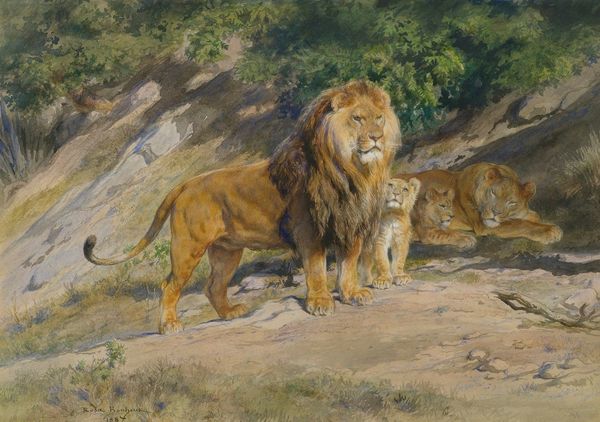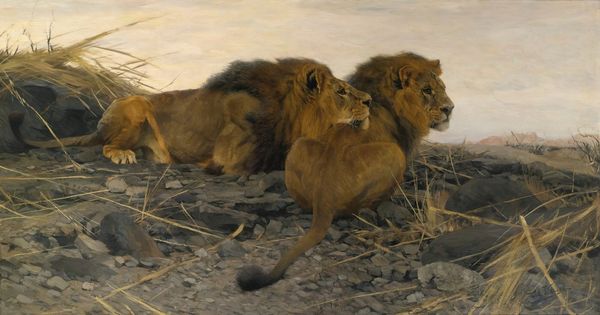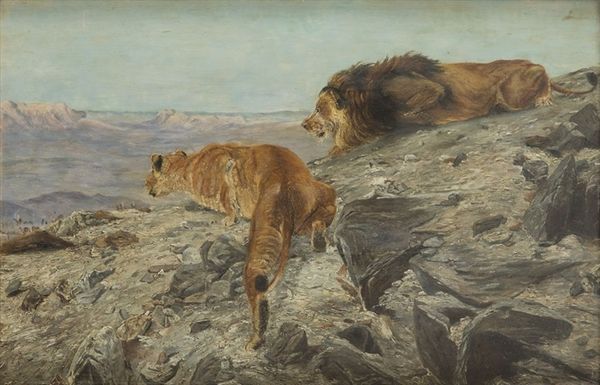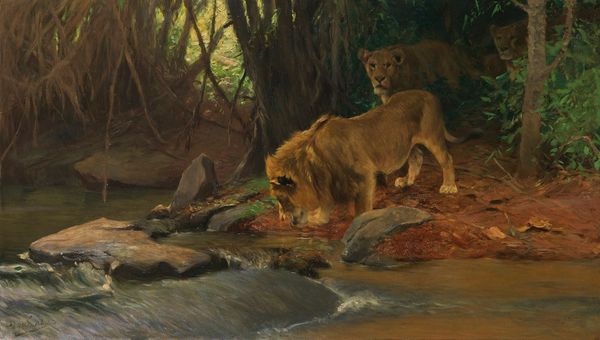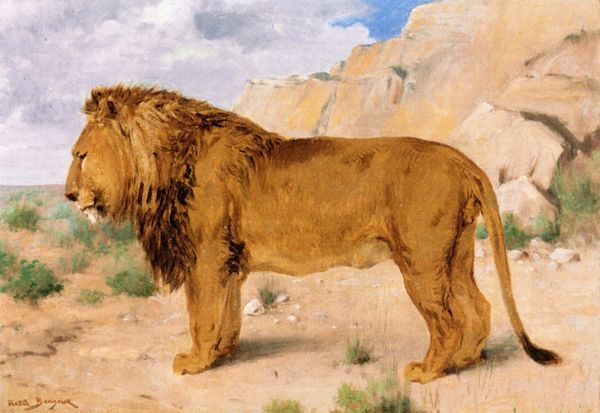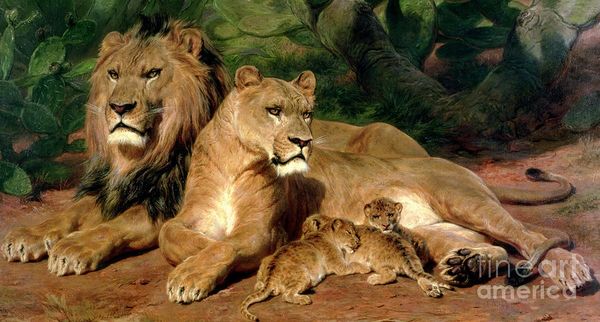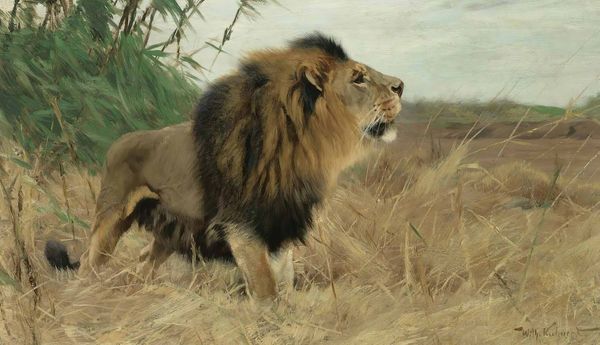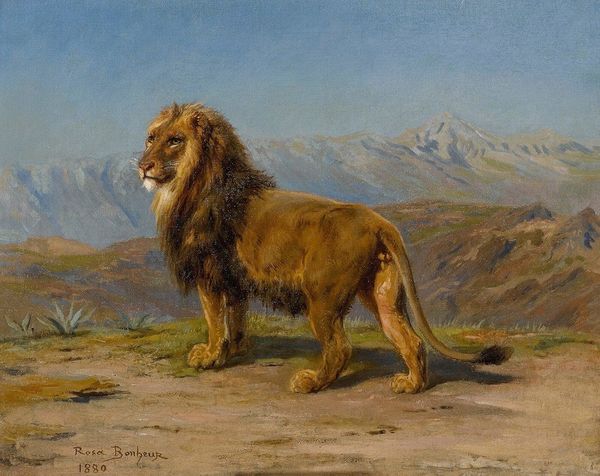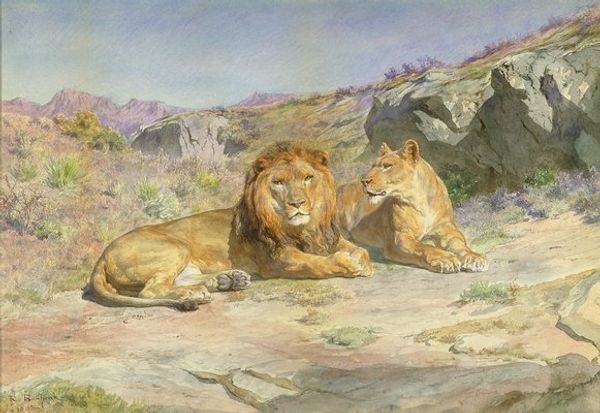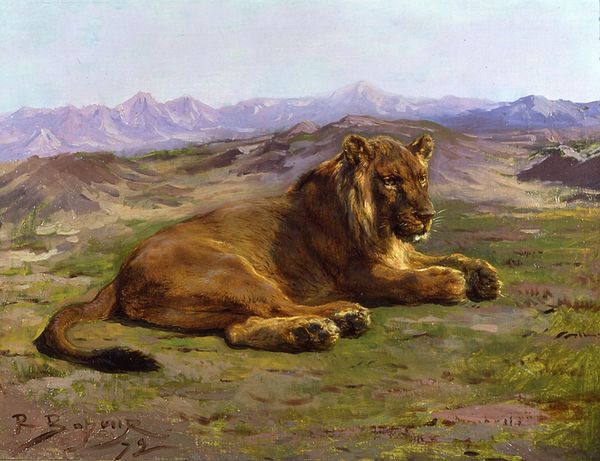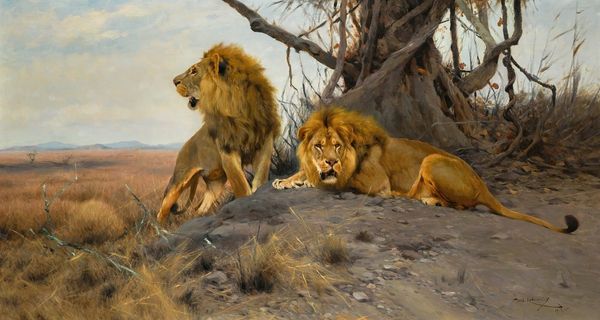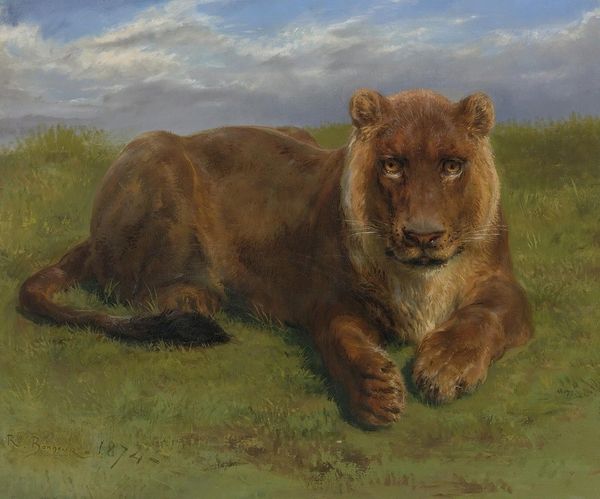
painting, oil-paint
#
painting
#
oil-paint
#
landscape
#
oil painting
#
history-painting
#
academic-art
#
realism
Copyright: Public domain
Curator: Standing before us, we have Briton Riviere's "On the Bank of an African River," an oil painting dating back to 1918. It offers quite a glimpse into how European artists imagined the African landscape at the time. Editor: Right. My first thought is how incredibly…posed it all feels. Like these lions were told to line up perfectly. There's something almost theatrical about it. But also beautiful in an odd way. Curator: It does possess a staged quality, doesn't it? This likely stems from the academic tradition in which Riviere was trained, emphasizing idealized representation and controlled composition. The painting invites us to consider the legacy of colonialism and its influence on the Western gaze. We are dealing here with race, imperial narratives, and animal rights. Editor: I never thought of it in these terms. The setting looks dreamy, maybe because the palette seems slightly washed-out. Almost pastel. Makes me think it could be titled "A Lion's Daydream," and then there's the idea of wilderness, something untouchable and powerful, but the artist frames everything with an exotic lens, no? Curator: Precisely. Riviere's portrayal constructs Africa as a land of untamed wilderness, devoid of complex societies and histories. This feeds into existing colonial ideologies of the period, creating what Edward Said might have called an "Orientalist" vision of Africa, one created through projections of Western fantasies. How does Riviere depict these majestic creatures? Editor: Well, they certainly look regal. But maybe a bit too docile? As if they're just large housecats waiting for their supper. Look at their eyes. No depth. This depiction lacks some nuance in their representation. Also, I wonder, how dangerous the painting itself has been? I imagine depicting them like that could have severe consequence for their image and conservation in their own ecosystem. Curator: The domestication you perceive reflects a broader tendency within Western art to project human qualities onto animals, often reinforcing hierarchical power structures. By depicting the lions as docile and manageable, the painting reinforces a sense of European dominance over the natural world, doesn't it? Editor: It really does. Considering that it's an animal painting made during wartime, and I can't stop wondering whether Riviere didn't consider all the real violence brought on others. All the human and animal suffering involved at that time… So I’d say the title is quite euphemistic. Curator: That’s such a sharp observation! Ultimately, this painting speaks to the enduring power of visual narratives to shape our understanding of the world and its people, inviting a crucial dialogue. Editor: Indeed, it gives pause, doesn’t it? Even when what you think you're seeing is nothing but the distorted image reflected by colonial history.
Comments
No comments
Be the first to comment and join the conversation on the ultimate creative platform.
